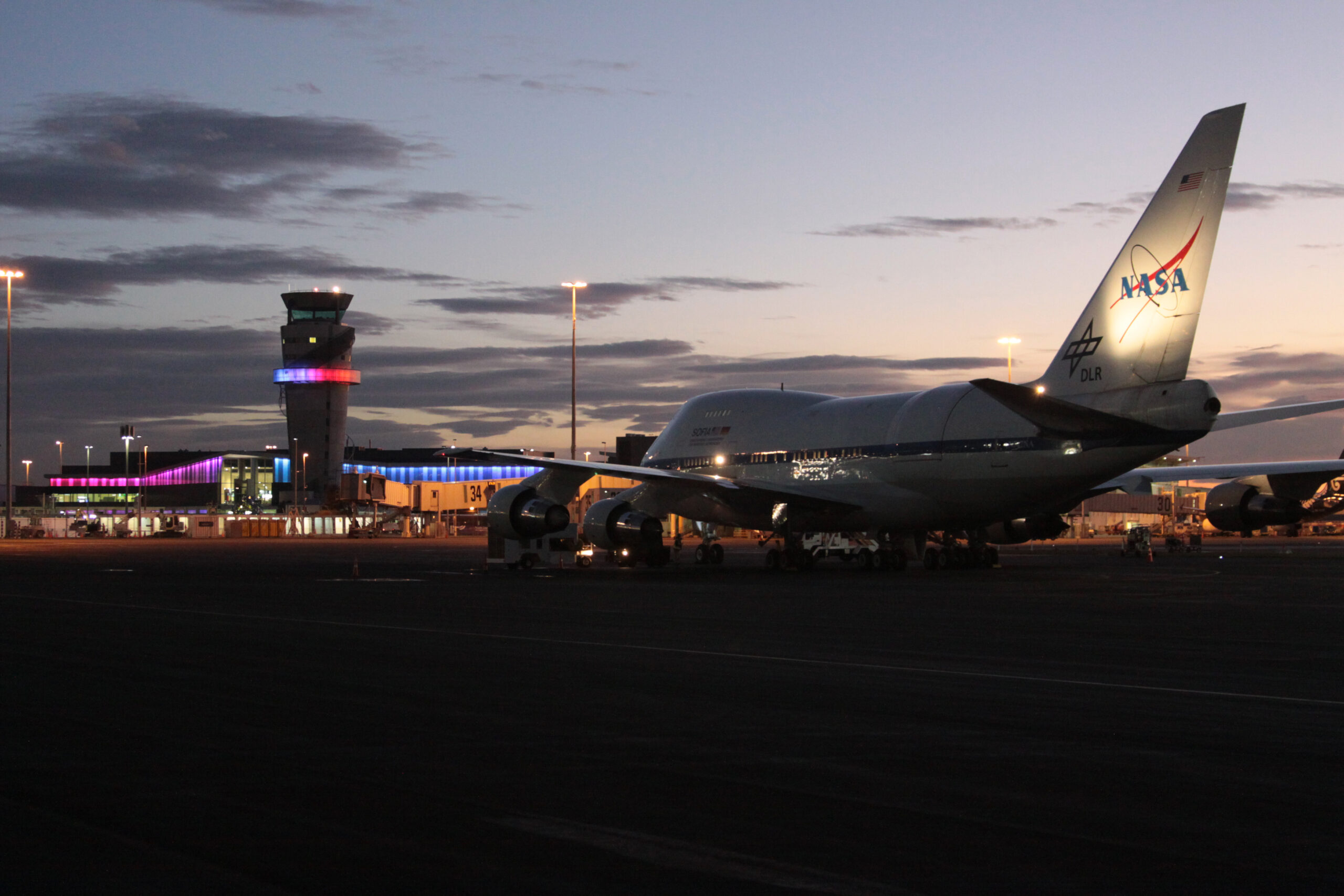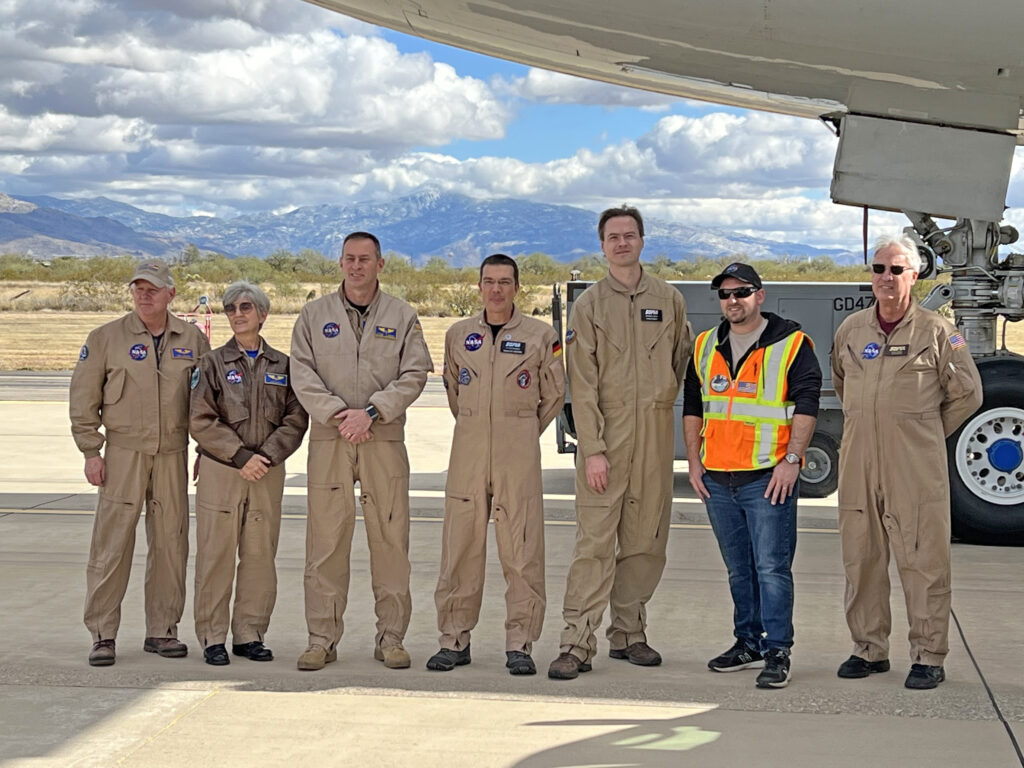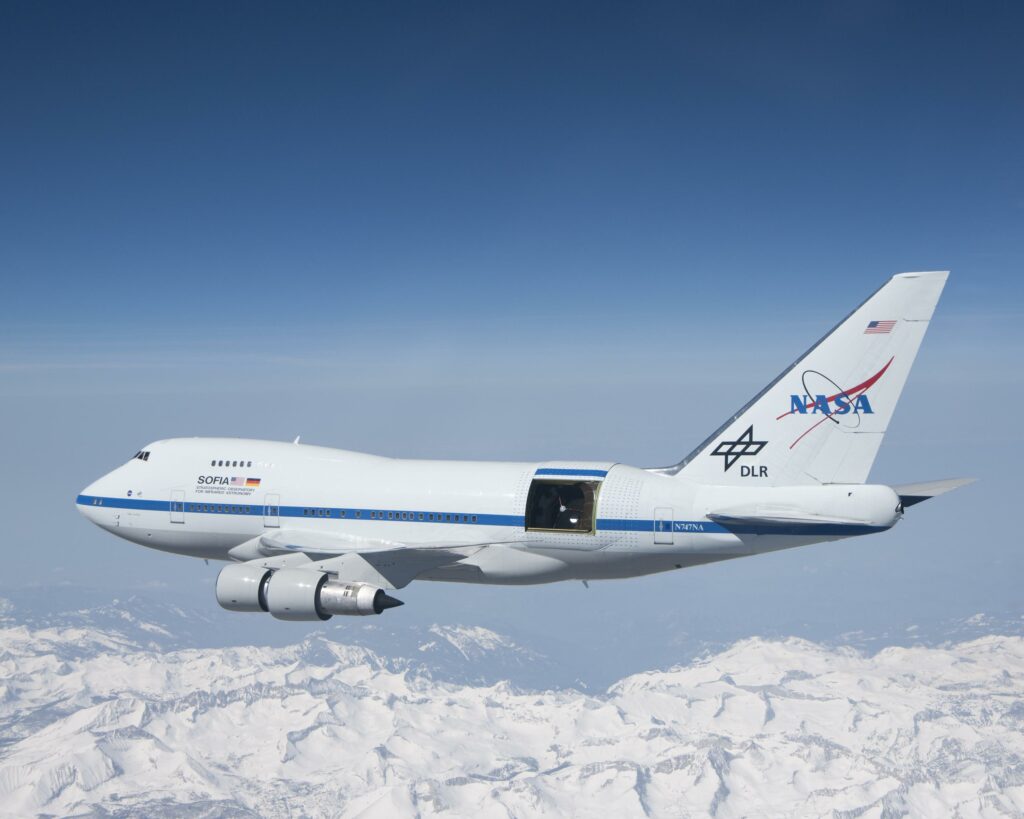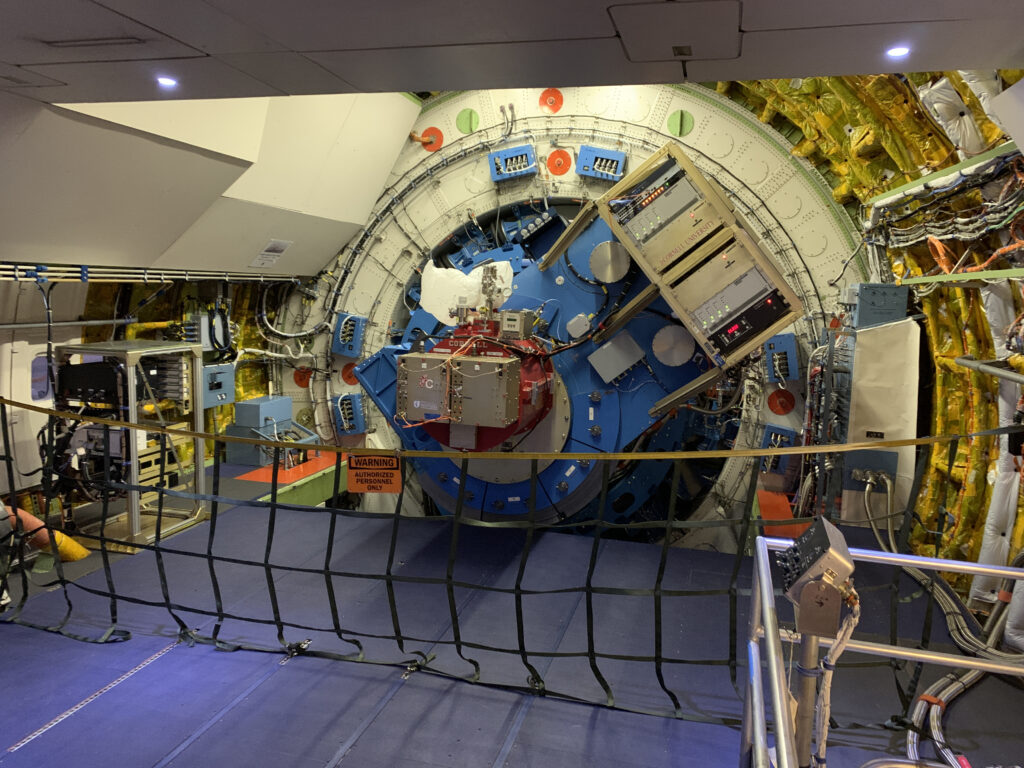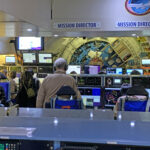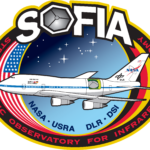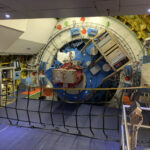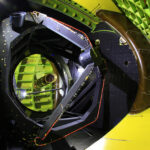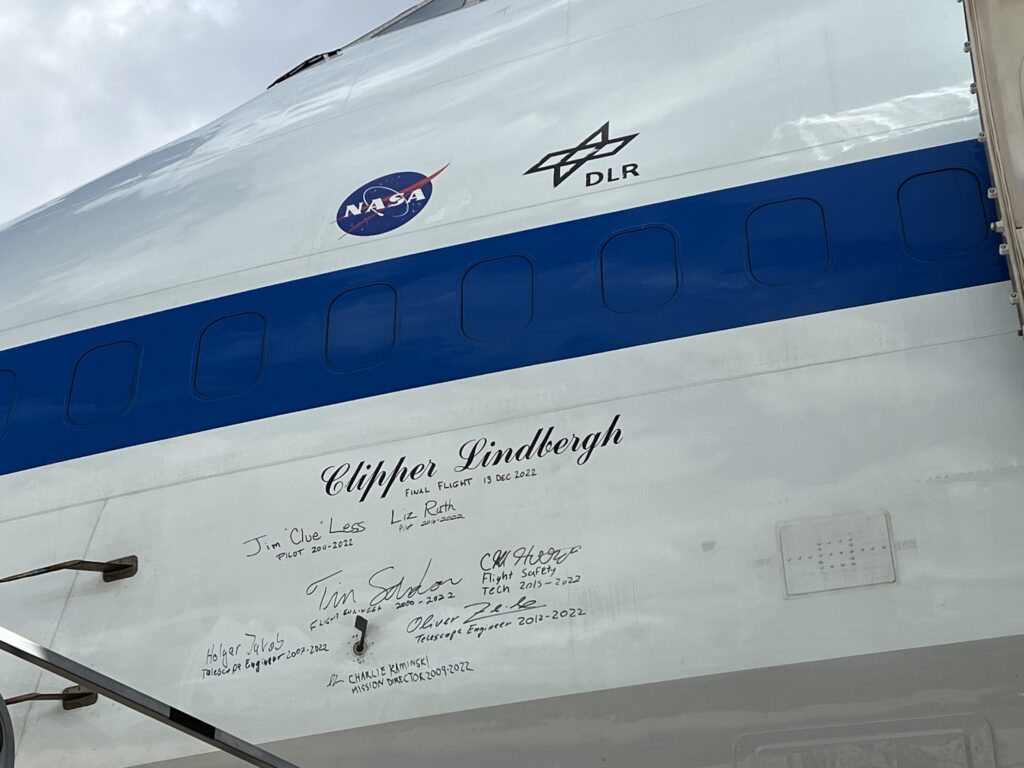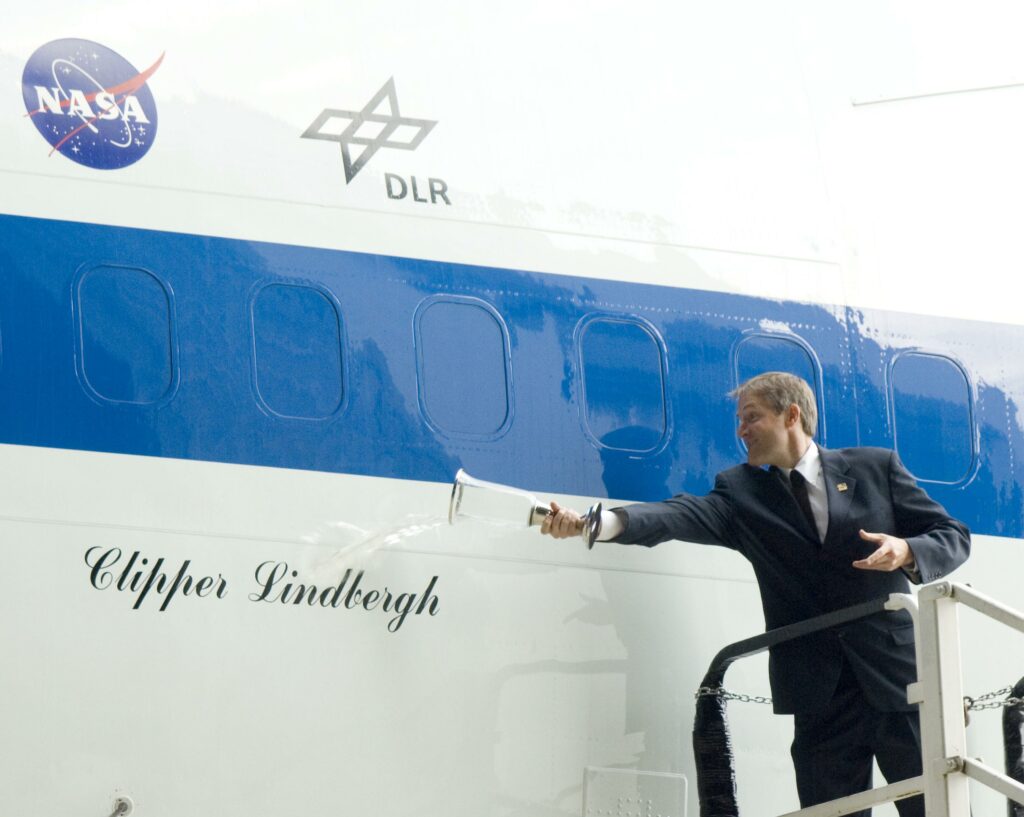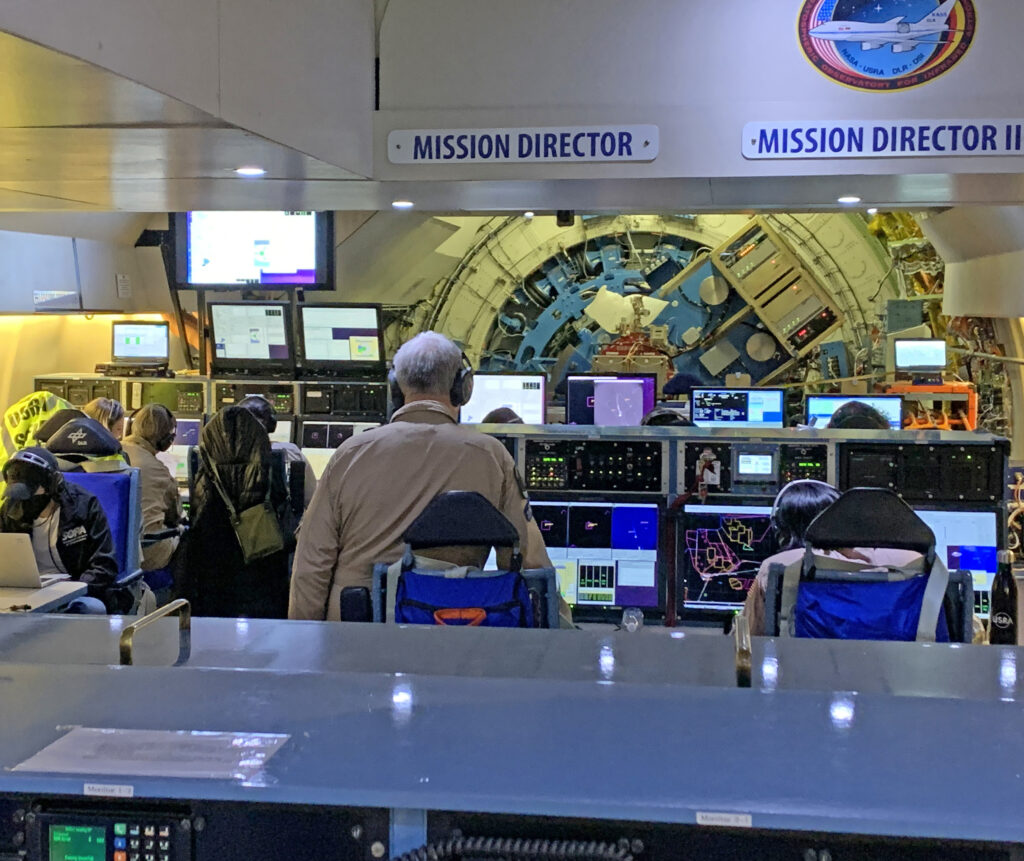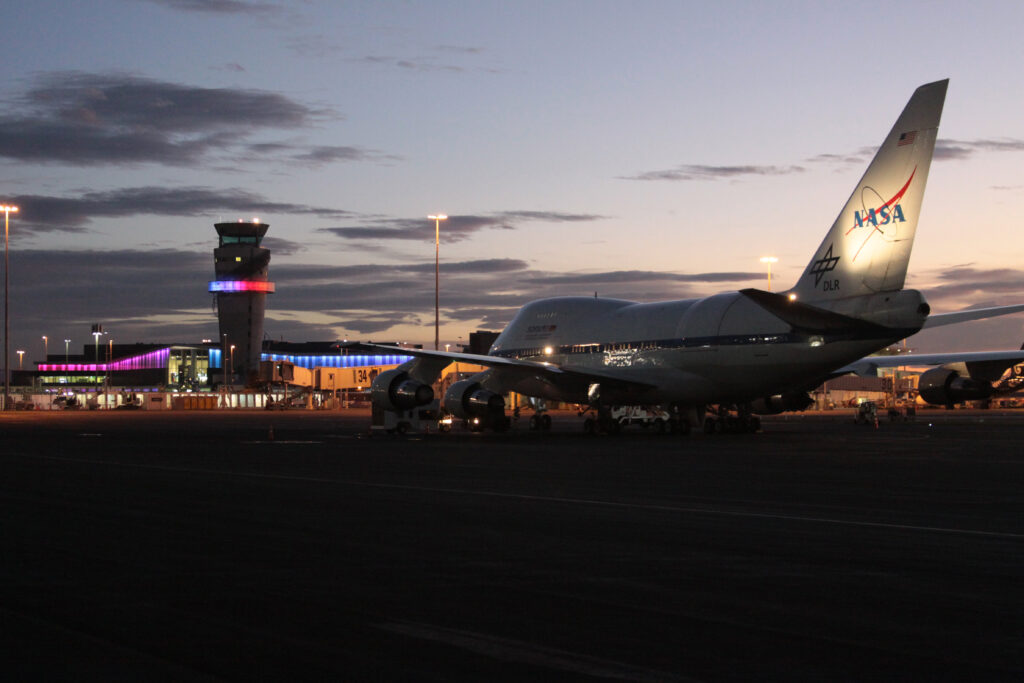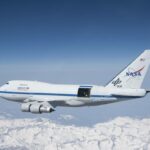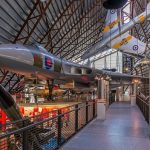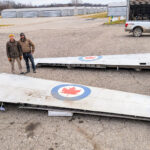We wanted to thank the remarkable Nicholas A. Veronico for the following piece. In addition to being a fabulous researcher and well known aviation writer, Veronico has had a long association with SOFIA, working with her crew and research team for some time now, so his words here have additional weight. We look forwards to future collaborations… thanks again Nick!
by Nicholas A. Veronico
NASA’s airborne telescope, the Stratospheric Observatory for Infrared Astronomy known as SOFIA, N747NA, landed at Davis-Monthan AFB, Ariz., today in the first step of its retirement. The observatory’s final home will be the Pima Air & Space Museum, located adjacent to the Air Force Base.
The observatory’s last flight departed Palmdale, Calif., at 8:31 a.m., local time, made passes at both Palmdale and the nearby Armstrong Flight Research Center, before heading east, arriving at Davis-Monthan AFB, at 11:33 a.m. local time. Flying the observatory was James L. Less (former USAF test pilot), Elizabeth “Liz” Ruth (former Air Force and United Airlines pilot), and flight engineer Tim Sandon (chief flight engineer, NASA Armstrong Flight Research Center). On the science deck was Mission Director Charlie Kaminski, Flight Mechanic/Safety Technician Chad Hutchison, along with Holger Jakob and Oliver Zeile, from the German SOFIA Institute (DSI) at the University of Stuttgart, who monitored the telescope systems during the flight. Kaminski holds the distinction of flying the most missions on SOFIA – 369 – and Less will transition from SOFIA to serve as a project pilot for the NASA X-59 Quiet Supersonic Technology (QueSST) aircraft.
SOFIA will sit at Davis-Monthan AFB until mid-January when she will be towed out the gate and over to the Pima Air & Space Museum. Once at the museum, NASA technicians will complete a “save list” of items that will be repurposed. The observatory is expected to go on public view at the museum in mid-April 2023.
The SOFIA Mission
SOFIA was an international astrophysics collaboration between NASA and the German Aerospace Center (DLR), and carried a telescope with a 106-inch (2.7-meter) diameter telescope.
Using a suite of six instruments, the observatory studied the universe at mid- and far-infrared wavelengths from 0.36 to 612 microns. Observations were focused on planets, planetary nebulae, astrochemistry, comets, supernovae, star formation, as well as the galactic center. Science missions lasted 10 hours and were flown at altitudes between 39,000 and 45,000 feet. The observatory flew 732 science missions during its operational life.
NASA’s airborne observatory became fully operational in 2014, and at its retirement still had more than a decade of useful life remaining. The decision to terminate the program was controversial as no other observatory, in use today or on the drawing board, can study the far-infrared at the wavelengths seen by SOFIA. Today’s newest telescope, the James Webb Space Telescope is only capable of viewing objects out to 28.3 microns and cannot see wavelengths where star formation and other astrophysical processes occur.
An Historic Airframe
SOFIA is a highly modified Boeing 747SP, one of only 45 of the type constructed. The SP was built to fly long-range routes, such as New York to Johannesburg, or New York to the Middle East, before engine technology changed in the mid-1980s that enable greater range with twin-engines. The SP could carry 232 passengers and a dozen crew over a range of 6,625 miles.
SOFIA began life as Pan Am’s Clipper Lindbergh, (N536PA, msn 21441) making her first flight on April 25, 1977. She was delivered to the carrier on May 6 of that year. Charles Lindbergh’s widow, Anne Morrow Lindbergh, christened the jetliner on May 20, 1977, the 50th anniversary of her late husband’s solo flight across the Atlantic Ocean.
In 1986, United Air Lines acquired Pan Am’s Pacific fleet, which included Clipper Lindbergh. The jetliner’s registration was changed to N145UA, and flew until parked at Las Vegas when phased out of service in 1995. NASA acquired the SP on Oct. 27, 1997, and the SOFIA program got underway. Modifications to the jetliner, now N747NA, were accomplished at Waco, Texas, and SOFIA made her first post-modification flight on April 26, 2007.
On May 20, 2007, Lindbergh’s grandson, Erik, re-christened NASA’s airborne telescope Clipper Lindbergh. Additional modifications were completed at NASA Armstrong Flight Research Center’s Flight Facility at Air Force Plant 42 at Palmdale, Calif. This location would also serve as the observatory’s operating base, while the science staff was located at the SOFIA Science Center at NASA Ames Research Center adjacent to the former NAS Moffett Field, near San Jose, Calif. SOFIA’s first 100-percent open door test flight occurred on Dec. 18, 2009, and her “first light flight” – the first test of the entire telescope system – was on the night of May 25/26, 2010. The observatory’s first science flight was flown on Dec. 1, 2010. She reached full operational capability in 2014.
World-Class Science
SOFIA had the unique ability to study occultations. An occultation occurs when a planet passes between Earth and a distant star and casts a shadow that travels across Earth’s surface. Ground-based observatories cannot be picked up and moved to a location within the shadow’s path of travel, however, SOFIA could fly to any location on the globe to make such observations.
As the planet blocks out the light from the star, the star’s light illuminates the planet showing whether the planet has an atmosphere, the composition of the atmosphere, and if there are winds circulating within the atmosphere. SOFIA’s first occultation observation took plane on June 23, 2011, when Pluto passed between the Earth and a distant star. Information from this occultation contributed to the body of knowledge of the former planet.
One of the most impressive occultation observations was made on July 10, 2017, when SOFIA departed Christchurch, New Zealand, and flew north into the South Pacific Ocean to catch a glimpse of a Kuiper Belt object known as 2014 MU69, estimated to be 12-25 miles across. Scientists from NASA’s New Horizons Spacecraft team wanted to know if there was debris floating around MU69 as an impact would be detrimental for the spacecraft. MU69 is the most distant object ever studied by a spacecraft as in 2017, it was 4.1 billion miles from Earth. MU69’s shadow was passing over the Earth at 55,000 mph, and the team had to navigate to a point in the exact center of the shadow to collect two seconds of data. There was no margin for error. The team successfully imaged the small object and data from the SOFIA observations was combined with subsequent studies to determine if it was safe for the New Horizons spacecraft to pass close-by.
SOFIA is also noted for its discovery of helium hydride, thought to be the first type of molecule to from after the Big Bang; that the nearby planetary system surrounding the star Epsilon Eridani is very similar to our solar system; as well as the role magnetic fields play in the behavior of Black Holes.







